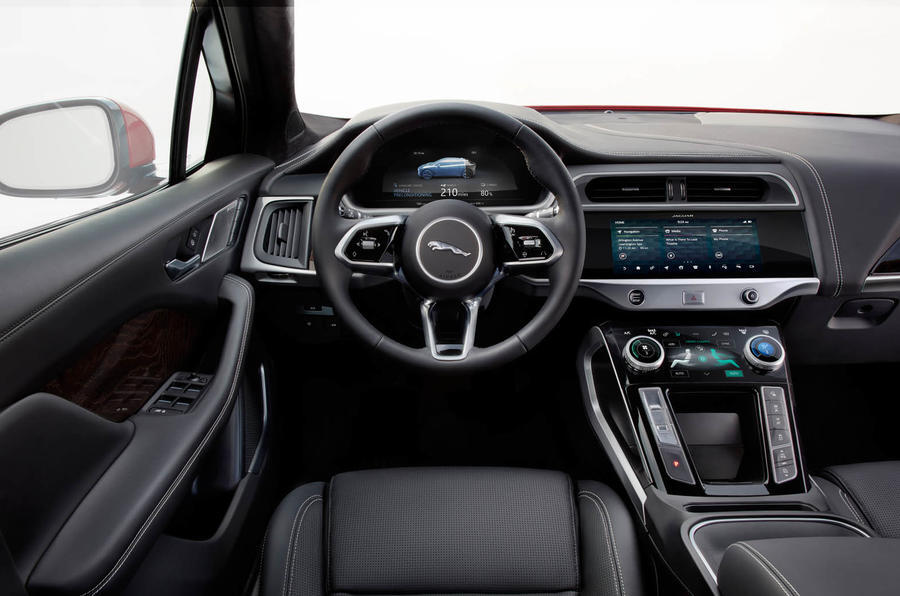For a while I watch others drive, noting the reluctance of this long wheelbase, ultra low-centre of gravity car to roll its body, or slide, or do anything very much except squeal its tyres in extremis and go where it is steered. It does indeed change direction brilliantly – you can see that with the naked eye – helped by the fact that its torque vectoring system can send more than 90% of torque to the rear axle for a proper rear-wheel-drive feel.
I settle in the driver’s seat, noting the quality of the materials, double stitching here, tastefully co-ordinating colours there. The brightwork is of high quality, the switches and two prominent and all-important central rotary knobs very pleasing to touch. The interior feels less radical in detail and colour than what I remember of the concept, but the architecture is very similar.
The upper slopes of the big centre console are largely covered by two large but well integrated screens (satnav and audio above, ventilation controls below) and there’s generous space behind it for equipment plus a convenient hand-sized hatch to access it from the centre. I’m sitting in what are called ‘performance seats’ which, of three seat designs, are most reminiscent of those in the original concept car.
Everyone keeps insisting, however, that these are prototypes and the finish will get better. Magna Steyr, which is I-Pace’s manufacturer in Graz, Austria, has just begun making cars for production, but these won’t be in dealers’ showrooms until the summer.
There are three regular trim levels – S, SE and HSE, ranging in price from £63,495 to £74,445 (before government grant) – but ours is an £81,495 First Edition (which has special paint, equipment and trim and will be made for a year). We also have the optional 22in wheels which engineering manager and I-Pace guru Dave Shaw reckons best show off the handling.
It’s time to drive. There is no noise or auto-style creep, although you can choose the latter from a huge range of driving options if you desire. We glide off the mark like no combustion car ever did, then accelerate to the first obstacle cleanly and strongly. Instantly, the extreme faithfulness of this car to control inputs is clear. This is a tight course, so very soon we’re jinking and accelerating and regen-braking constantly. You can get 0.2g of retardation from simply coming off the accelerator, and another 0.2g from initial use of the brake pedal, so in most situations you hardly need friction braking at all.
The steering wheel feels big for tight manoeuvres like these, but the driving position is perfect: a fairly high wheel, plenty of seat bolstering and under-thigh support, an ideal instrument view, and the response to lock is accurate. Even here, with tyres screeching and the car always turning fast, Shaw’s words about the I-Pace’s torque distribution ensuring “uncorrupted” steering come back to me. The weighting is just right for serious driving, not merely convenient parking, and I’m surprised how little this body rolls. That’s a function of the low-mounted battery, I’m told, and the centralisation of the major masses.
In most derivatives you get conventional steel anti-roll bars (accompanying steel coil springs) to handle things. The low centre of gravity means they need to be as intrusive as many. On air suspension models – which offer three ride heights that vary over 90mm – the quick-acting air suspension units help control roll, too. As for grip, there’s plenty on the airport’s slow, non-slip tarmac, though off throttle the car tightens neatly in bends, especially when its maximum regeneration setting is engaged. This is only a five-minute drive, albeit an action-packed one, but the impressions I take from it are the I-Pace’s accuracy and precision.
